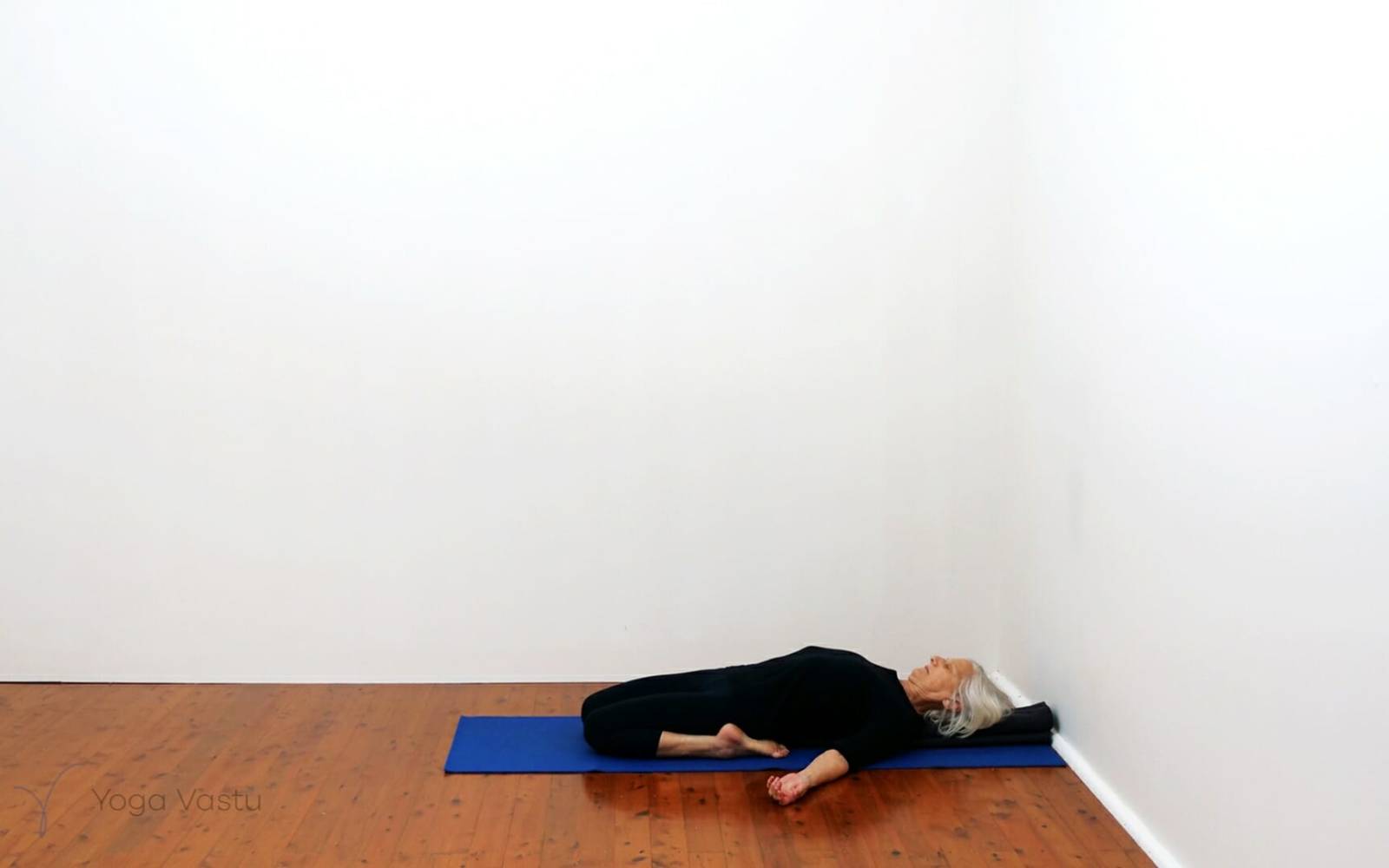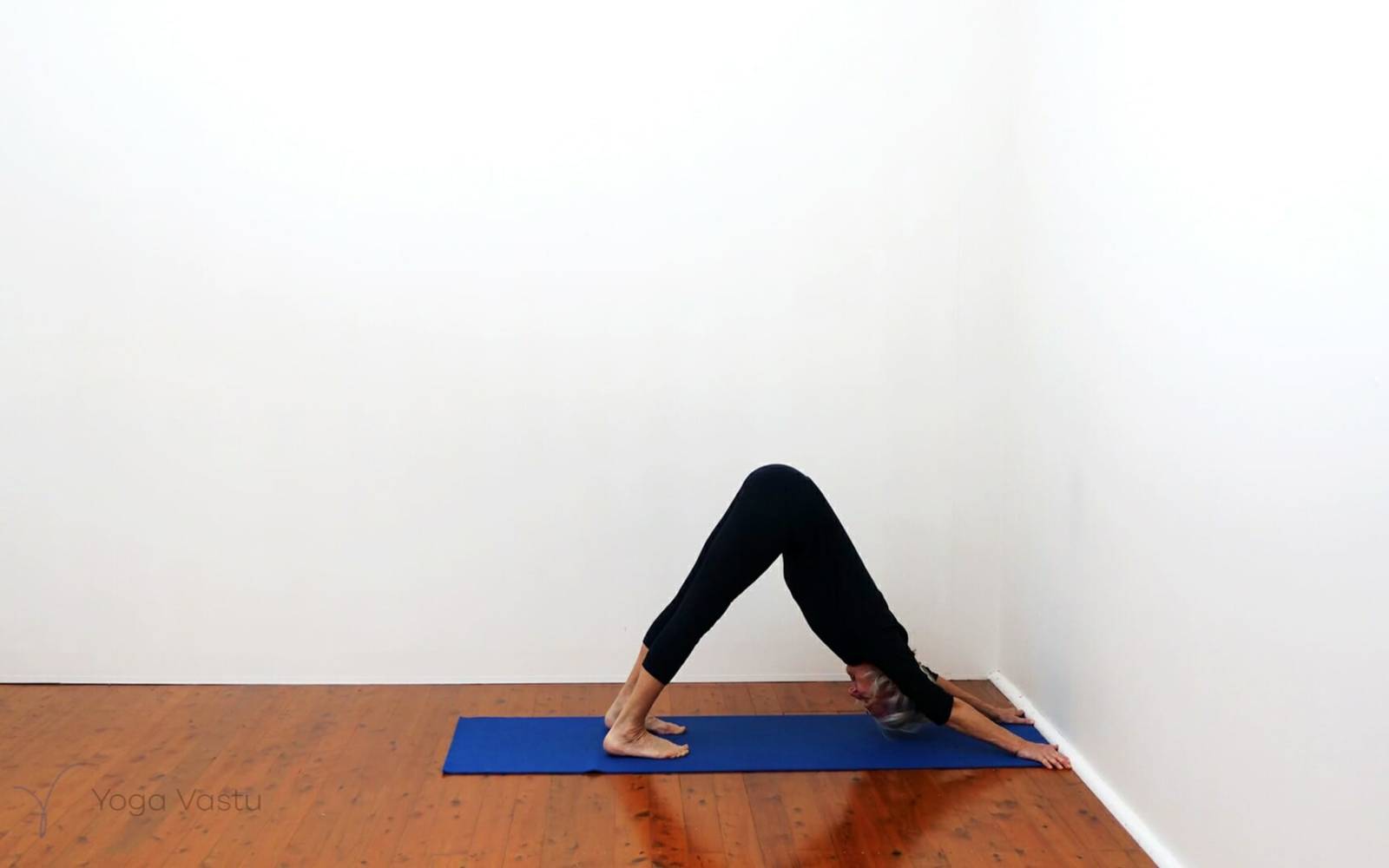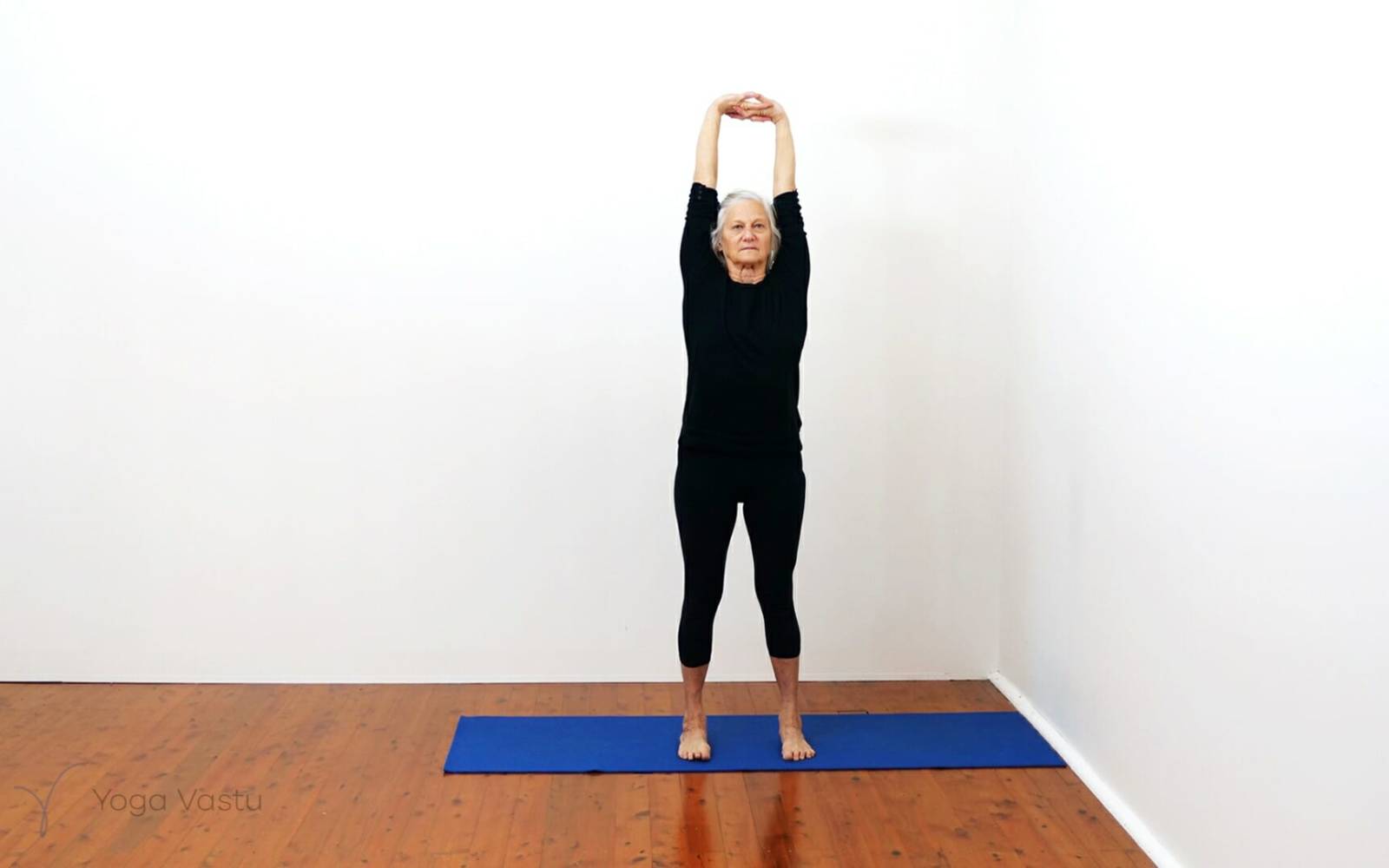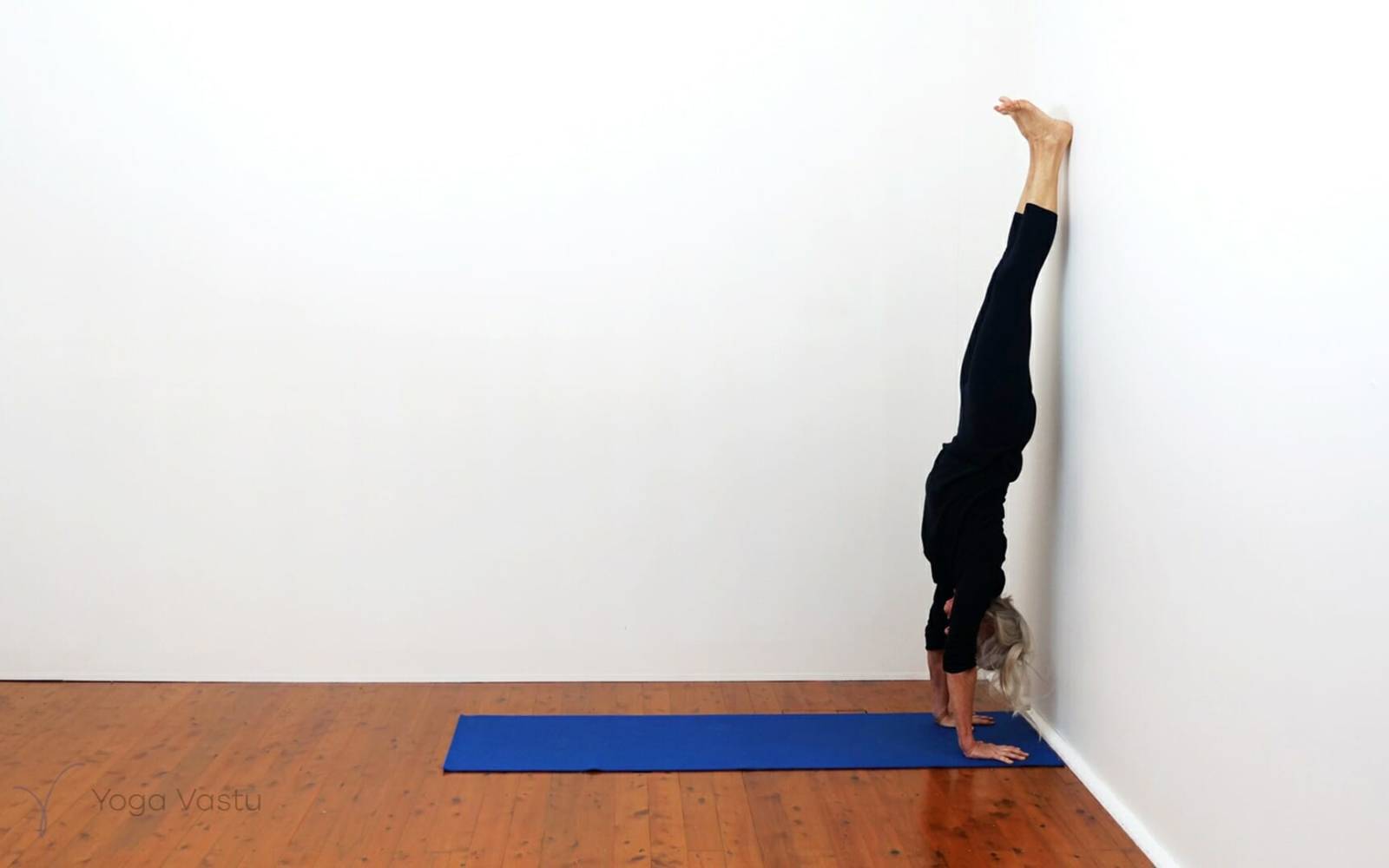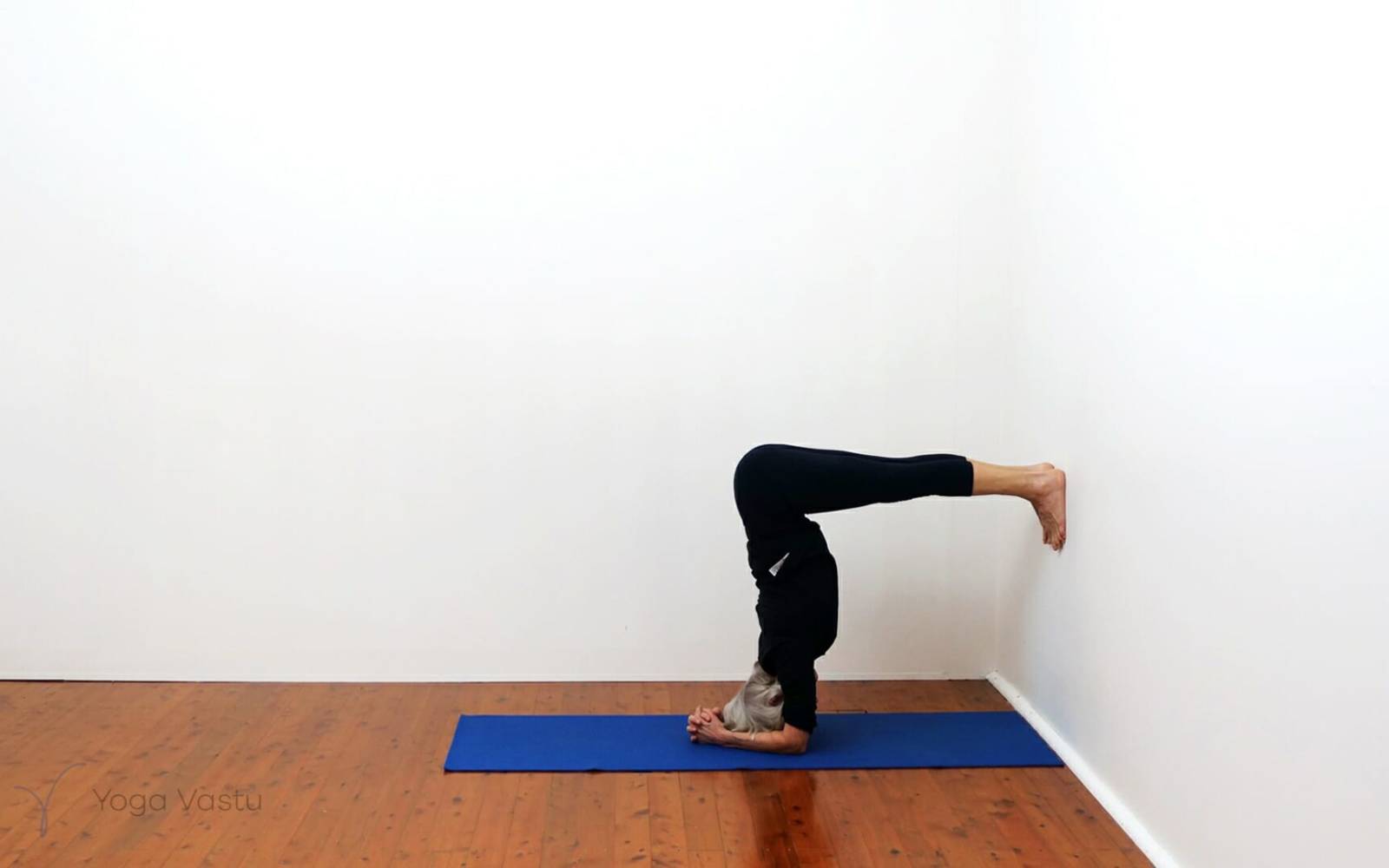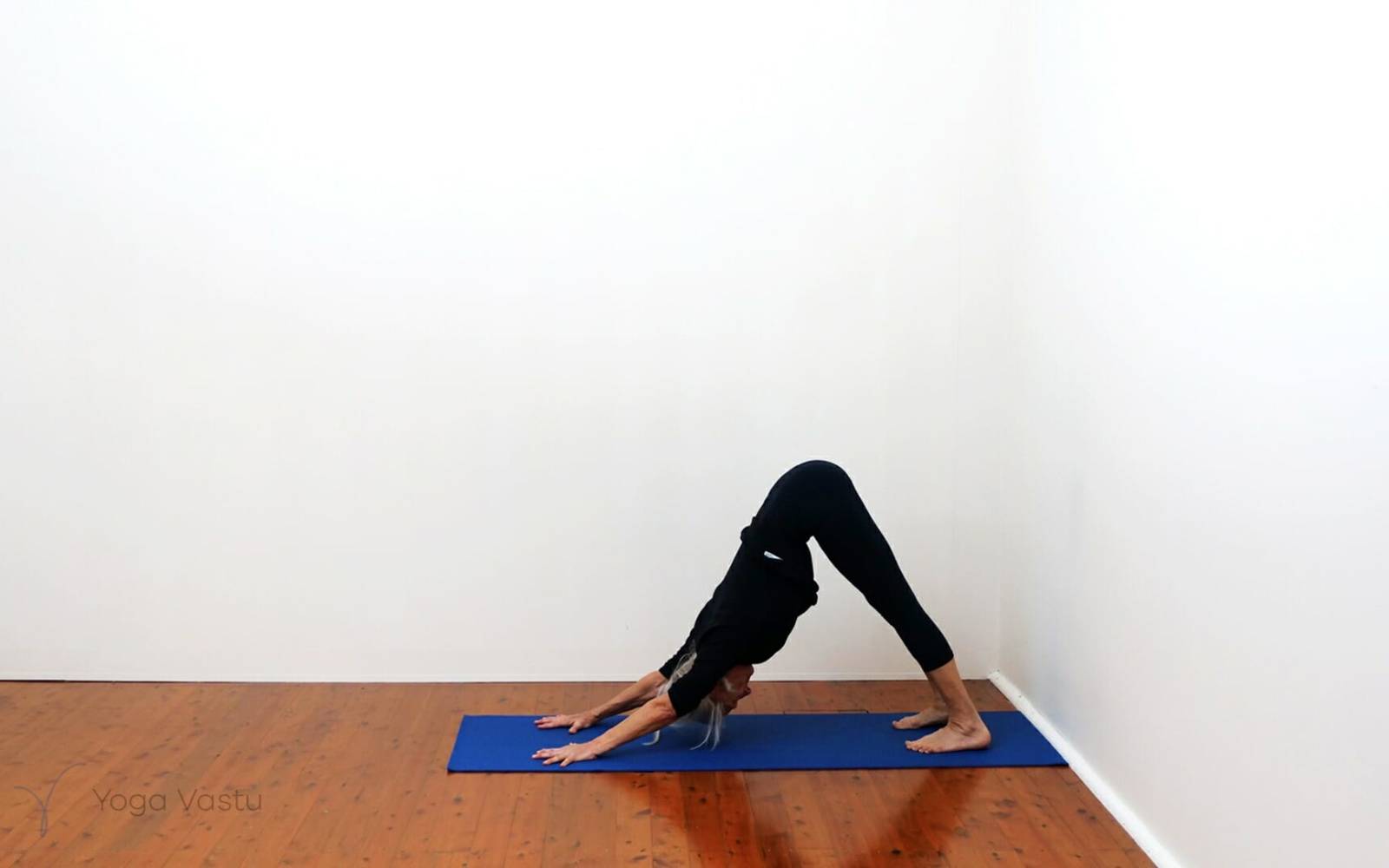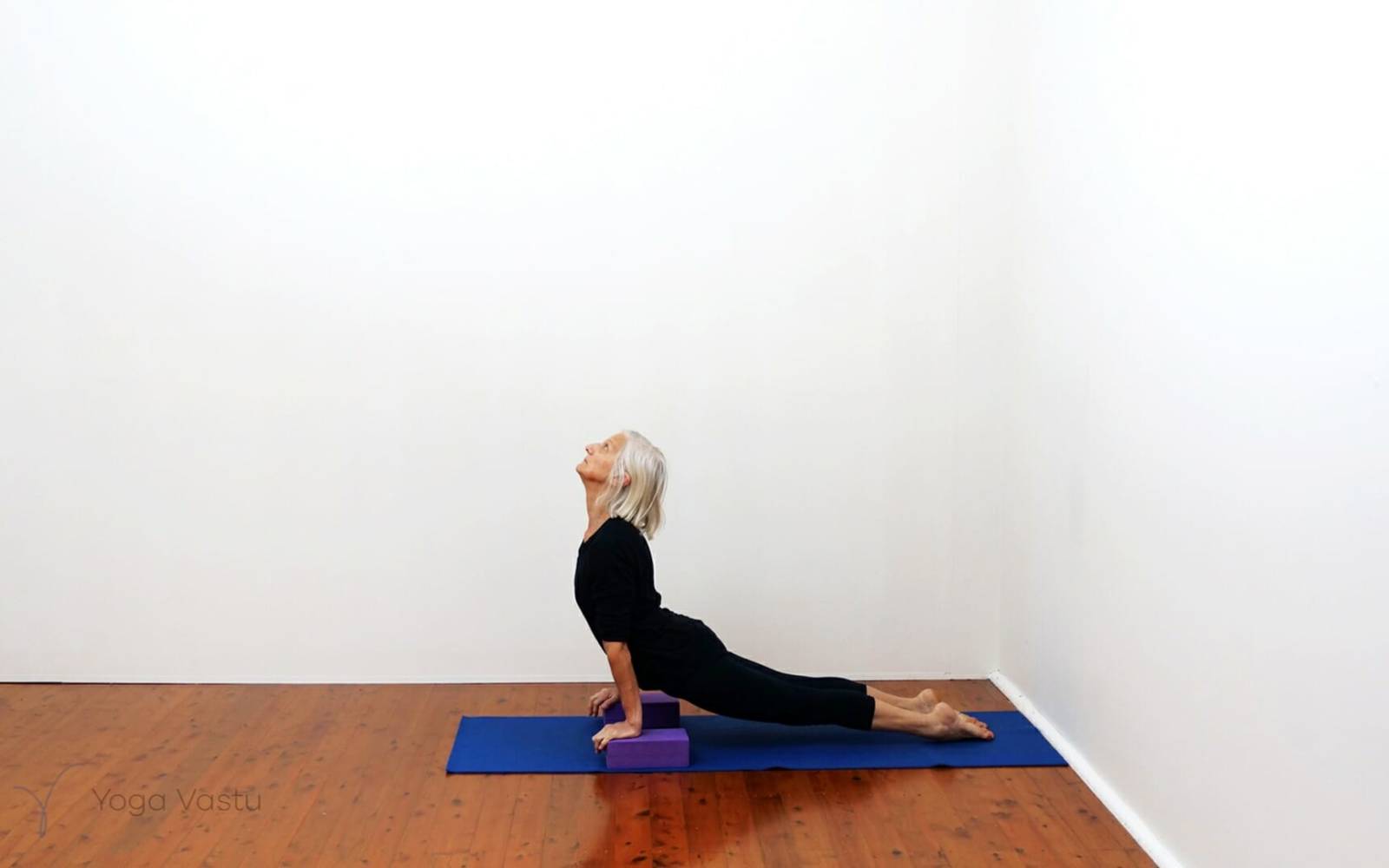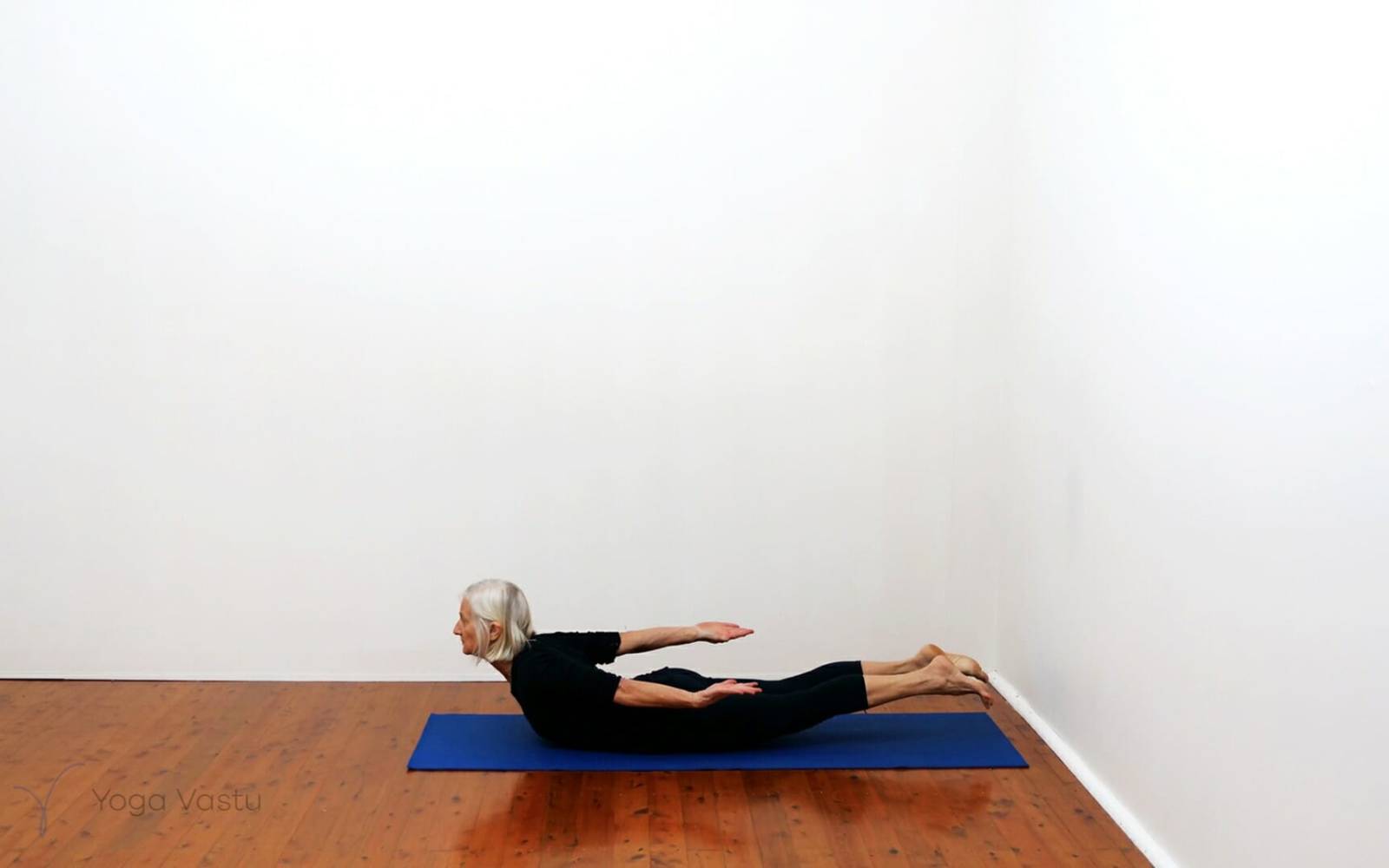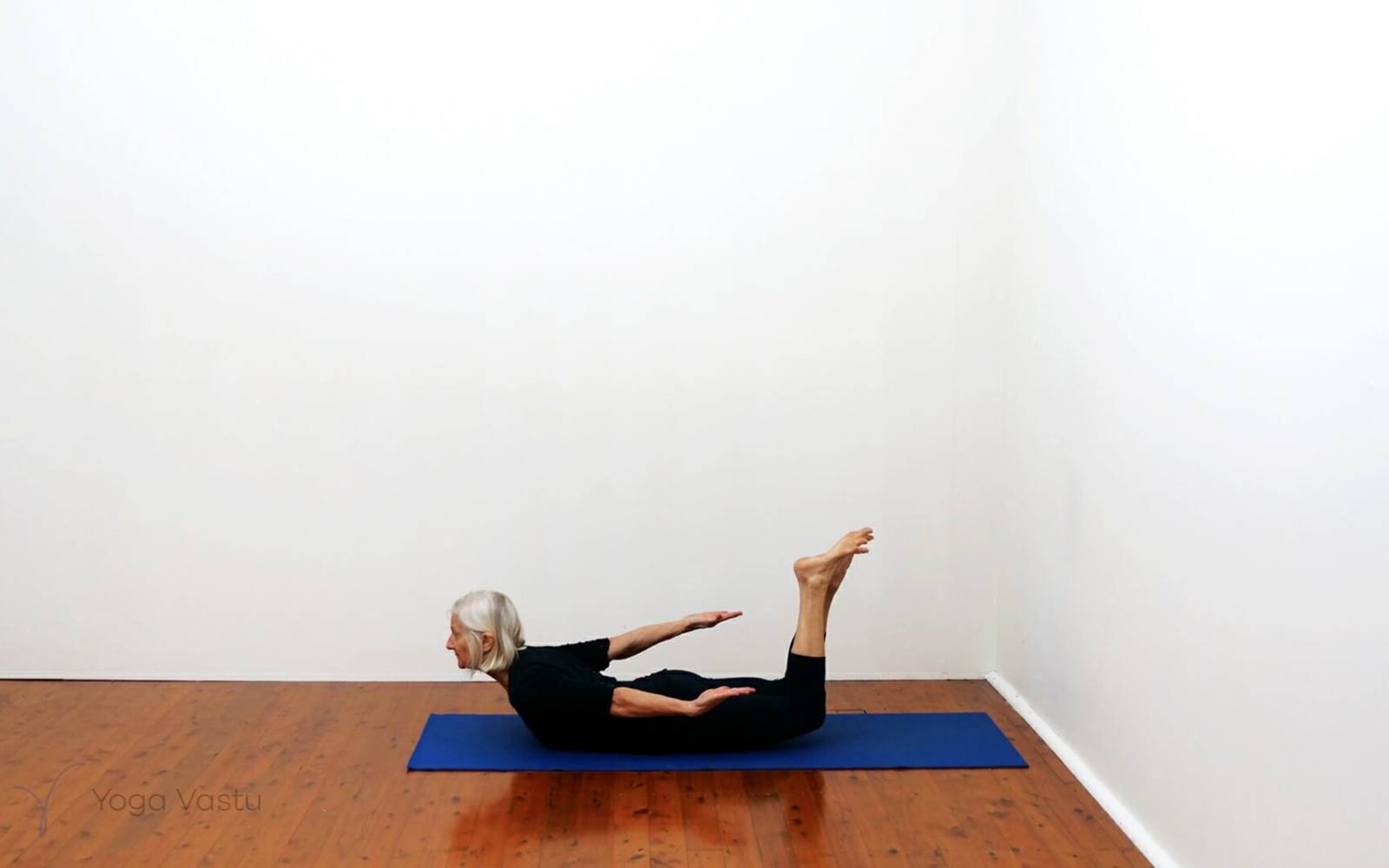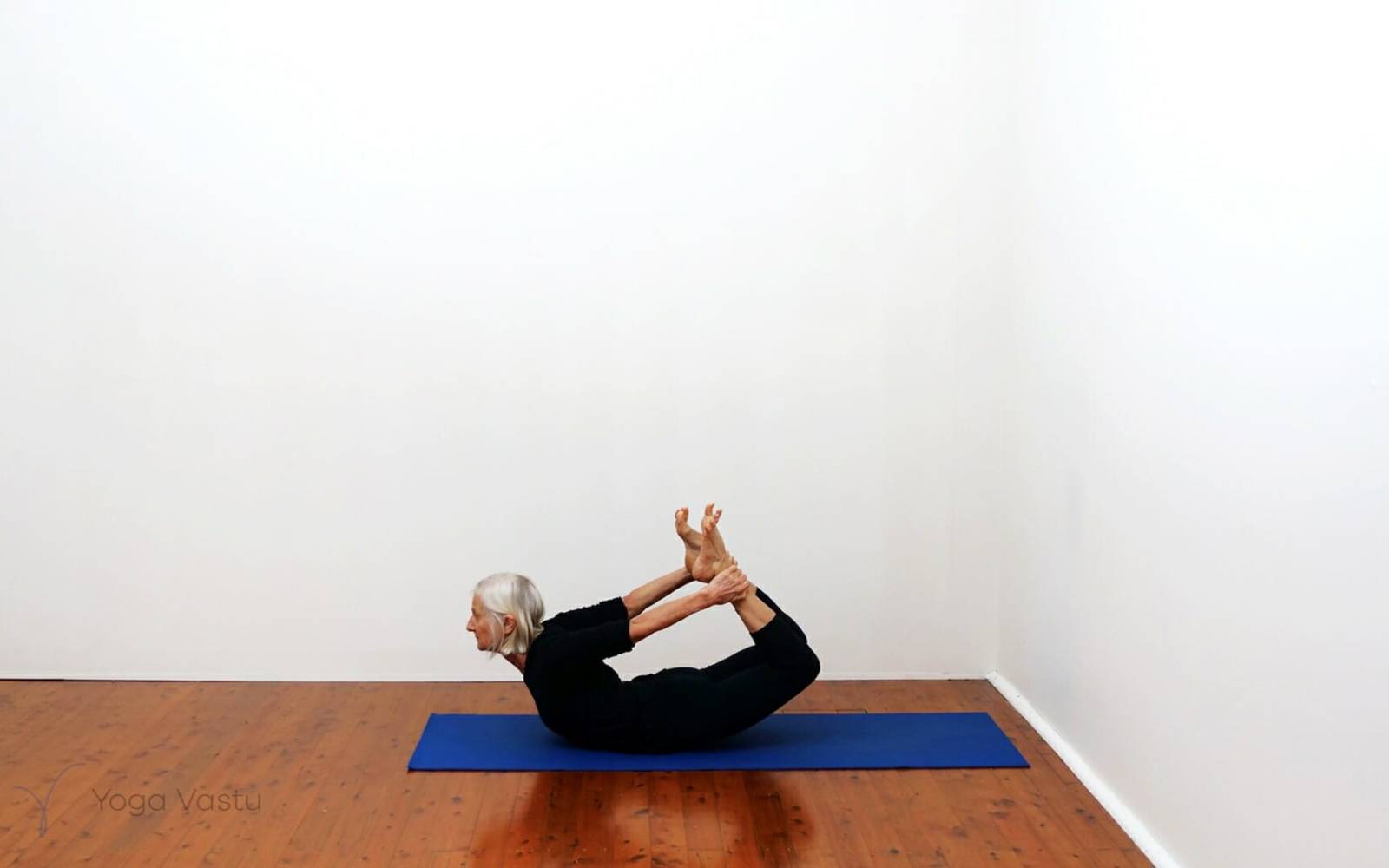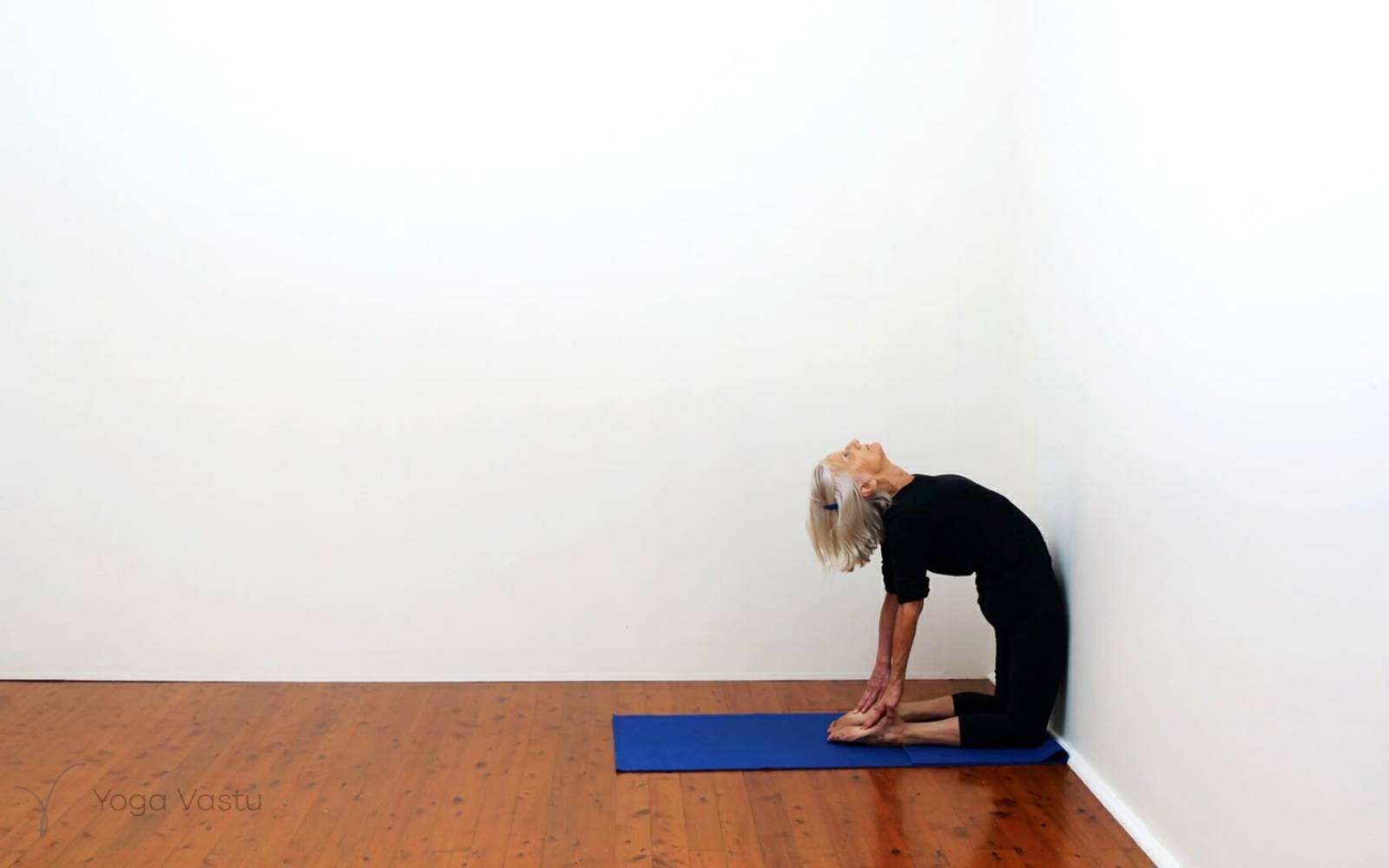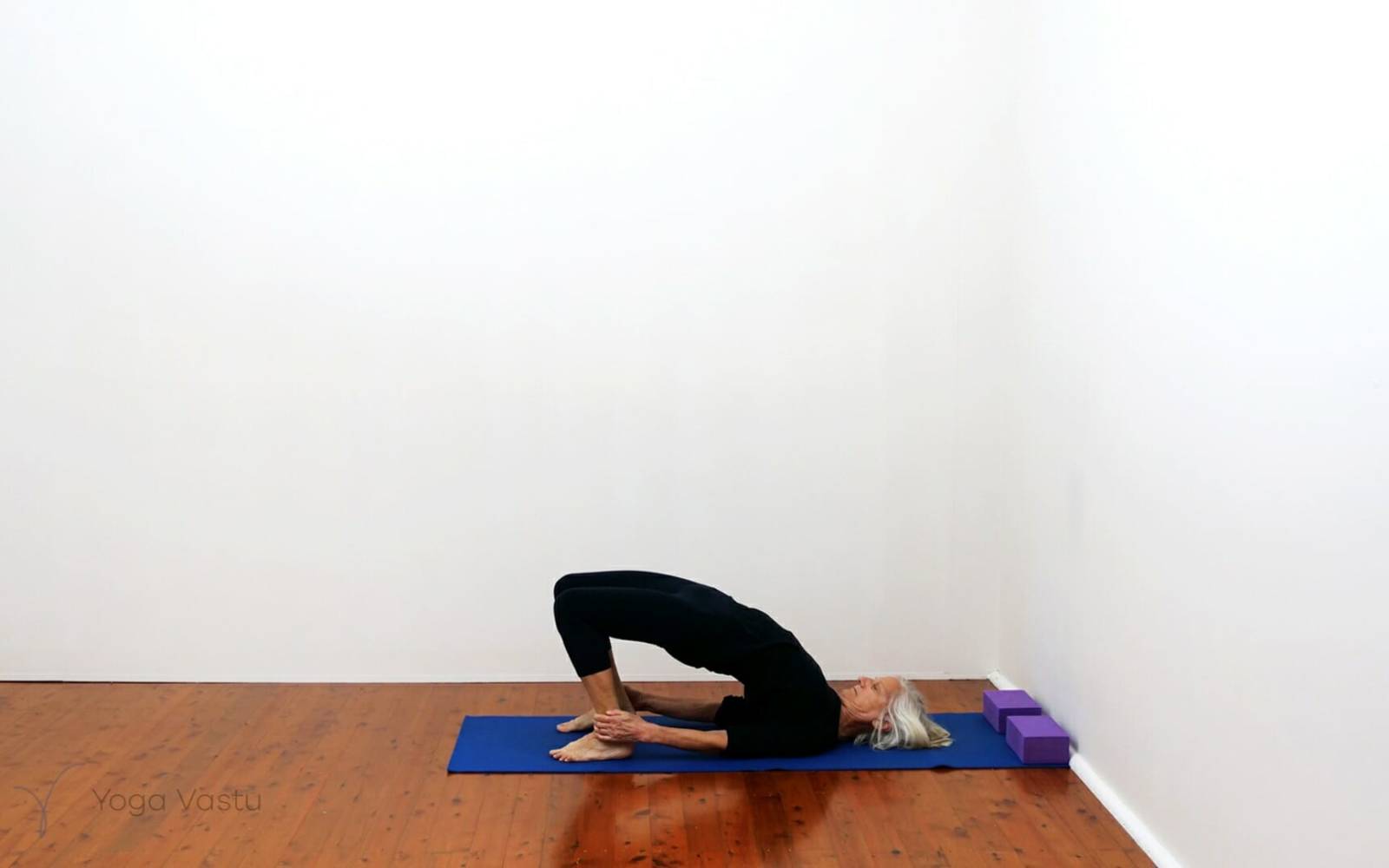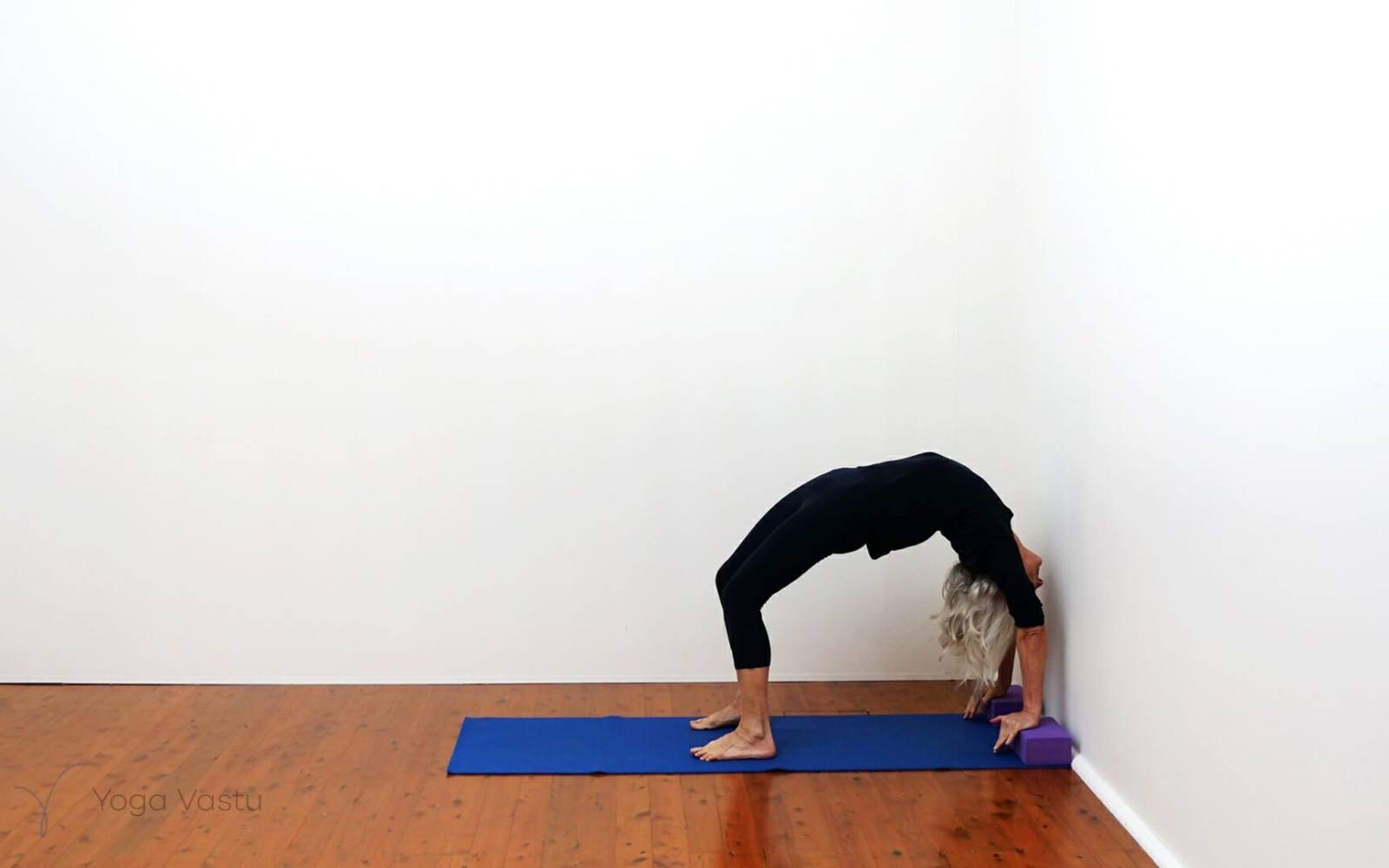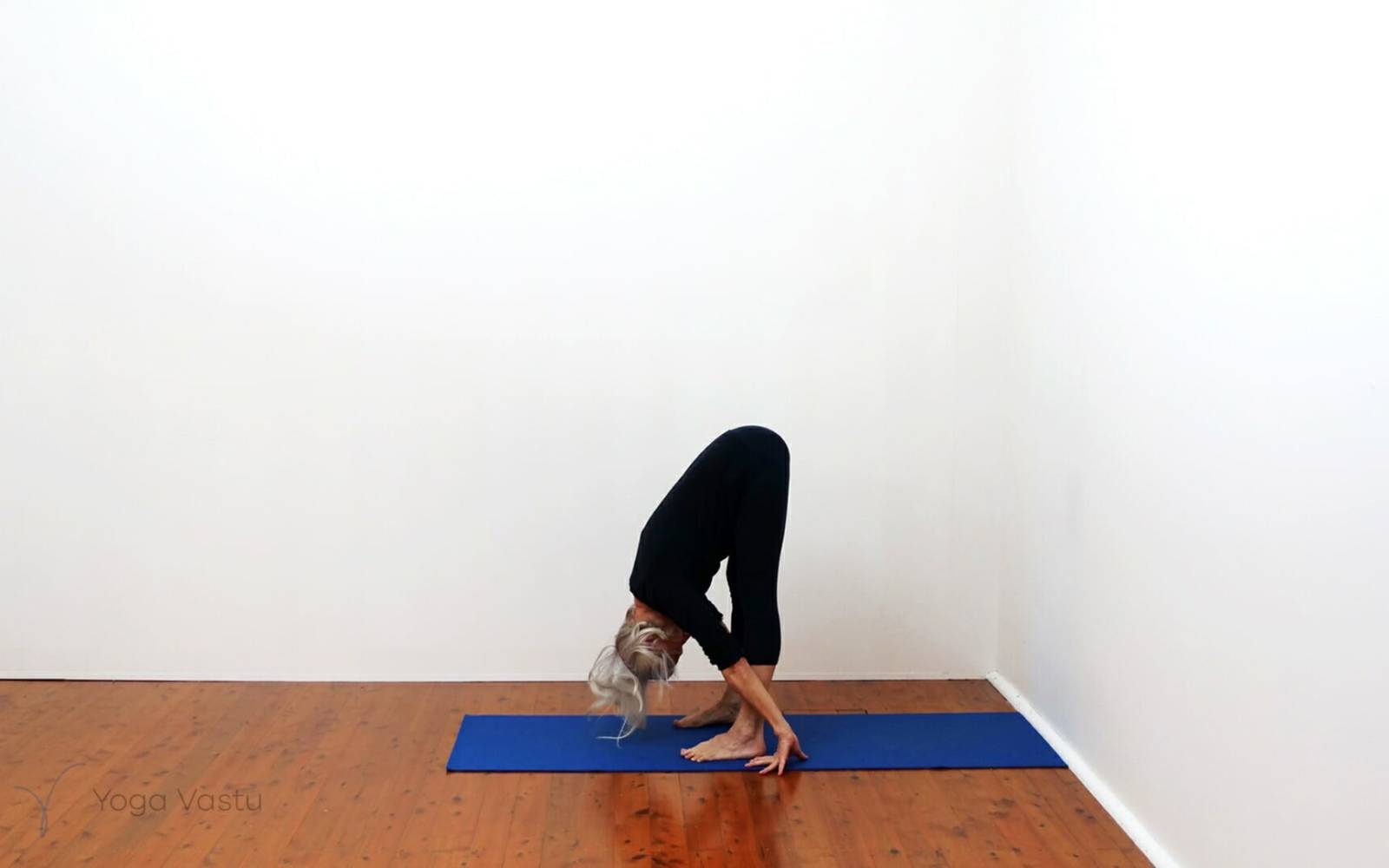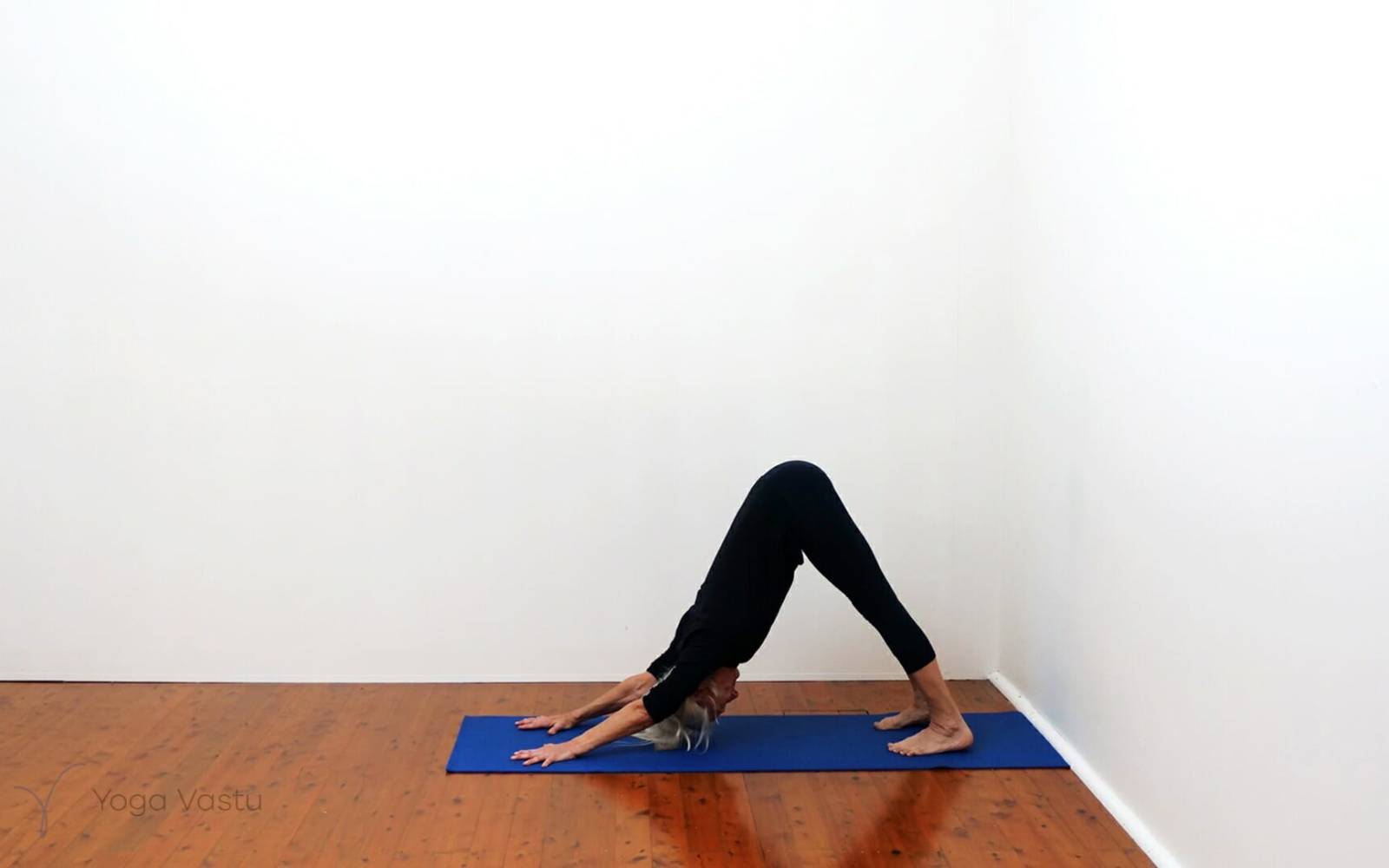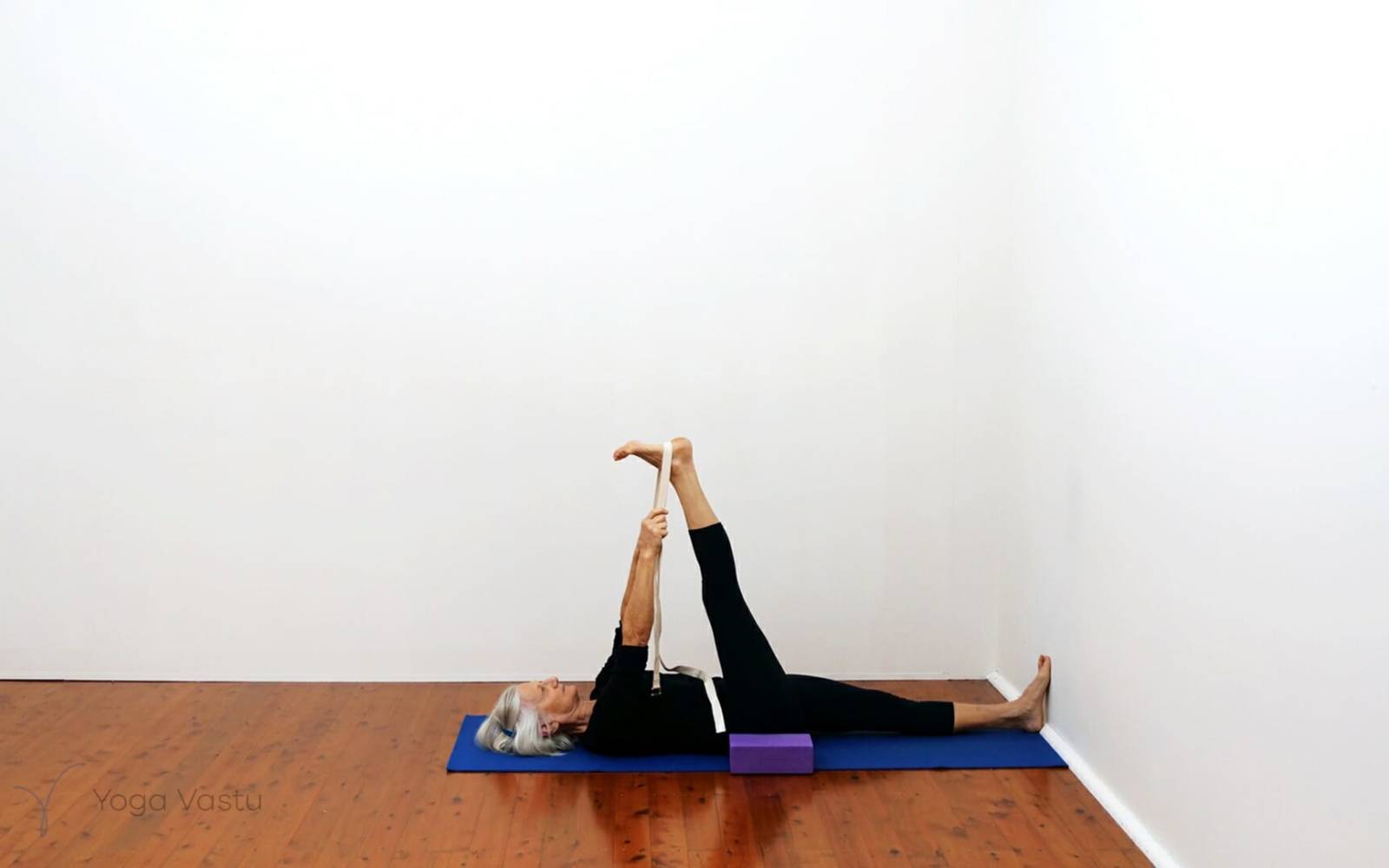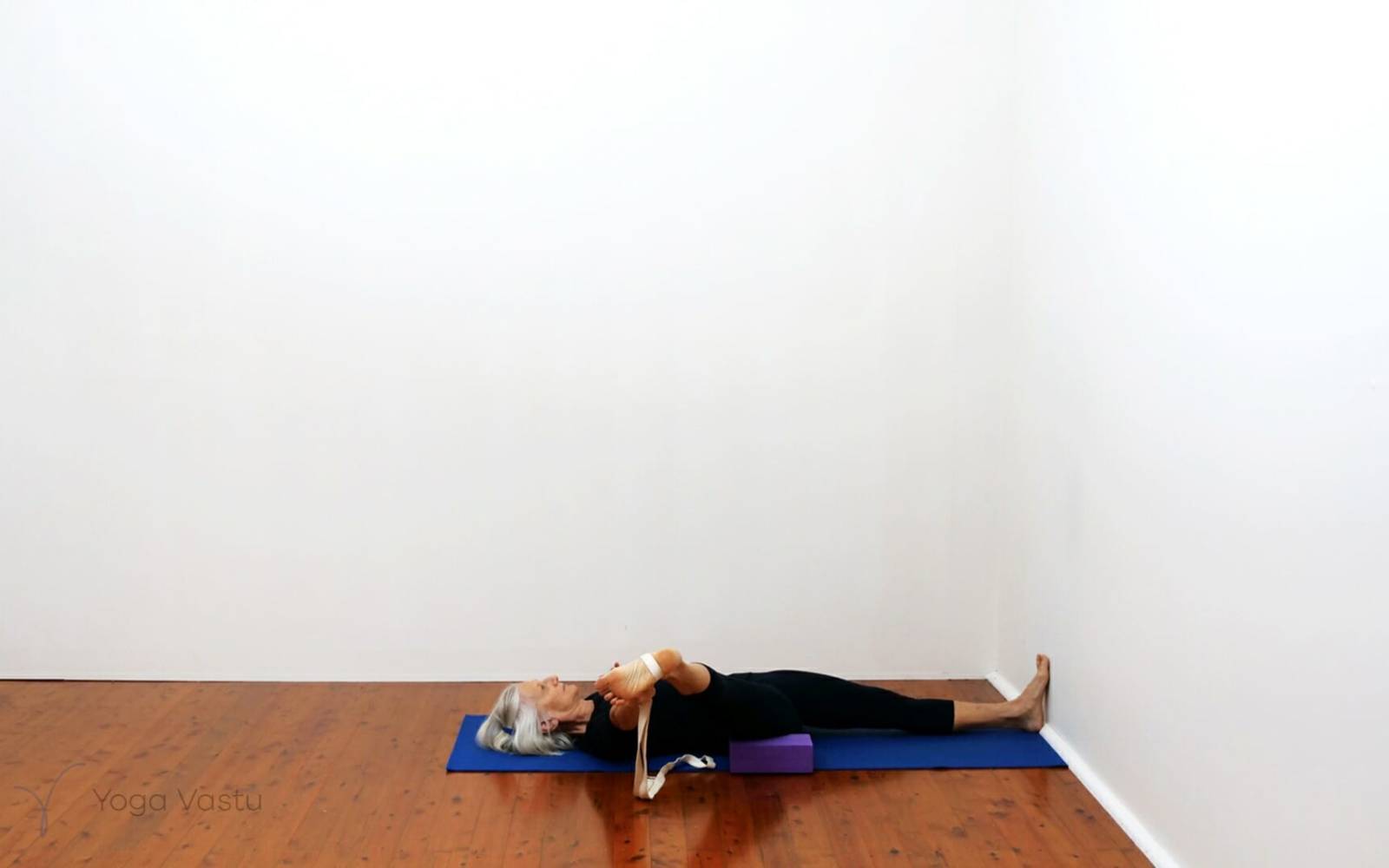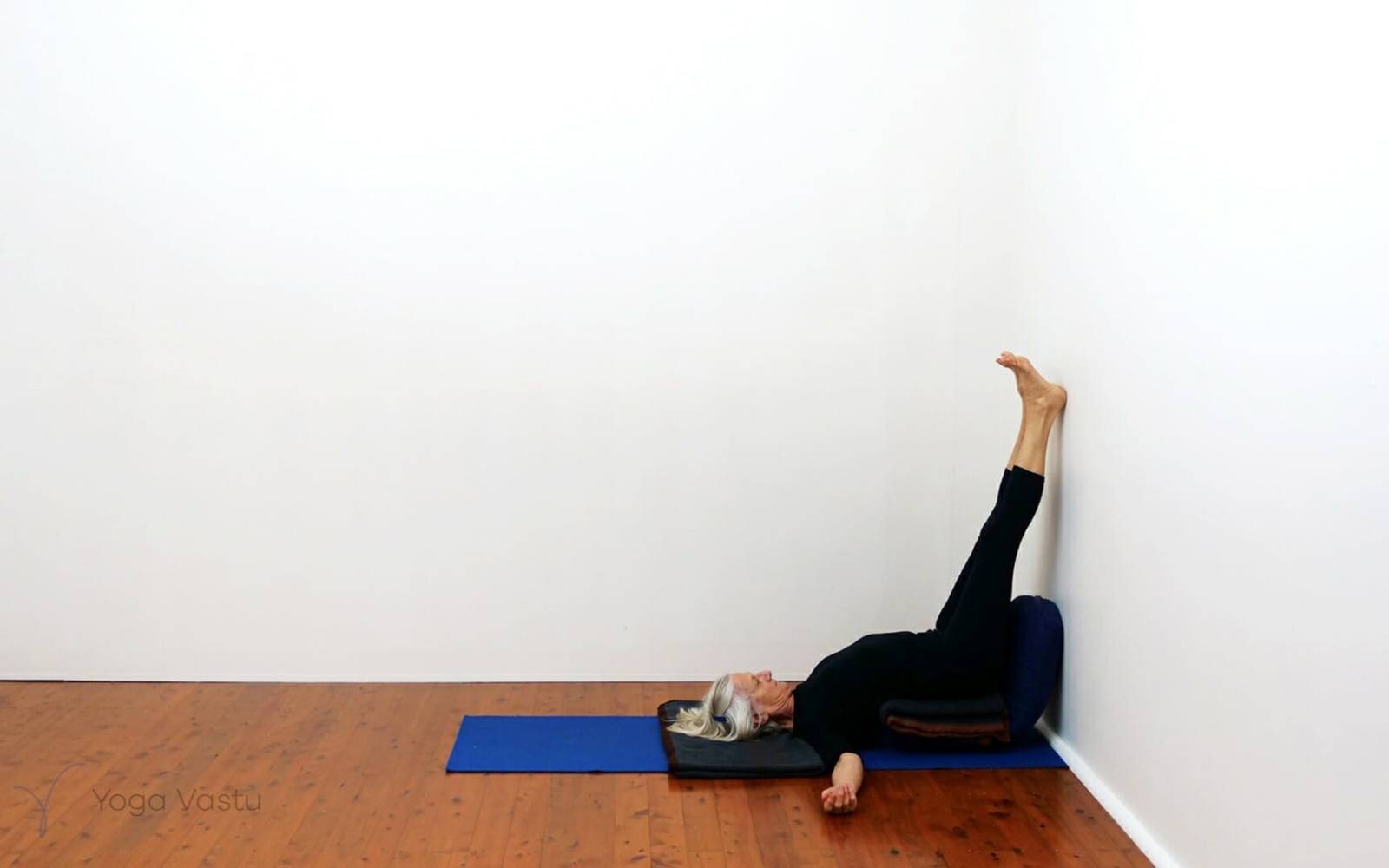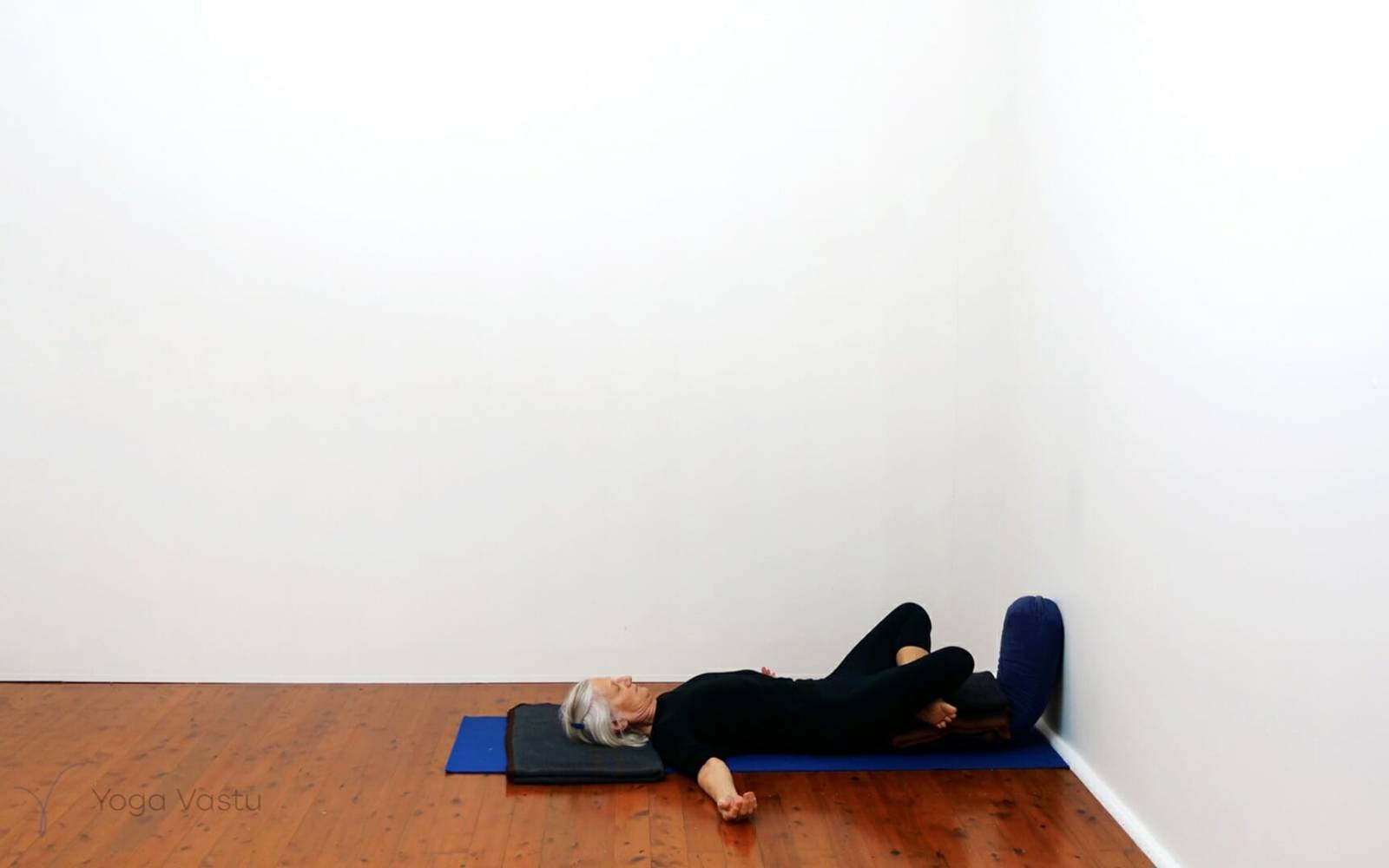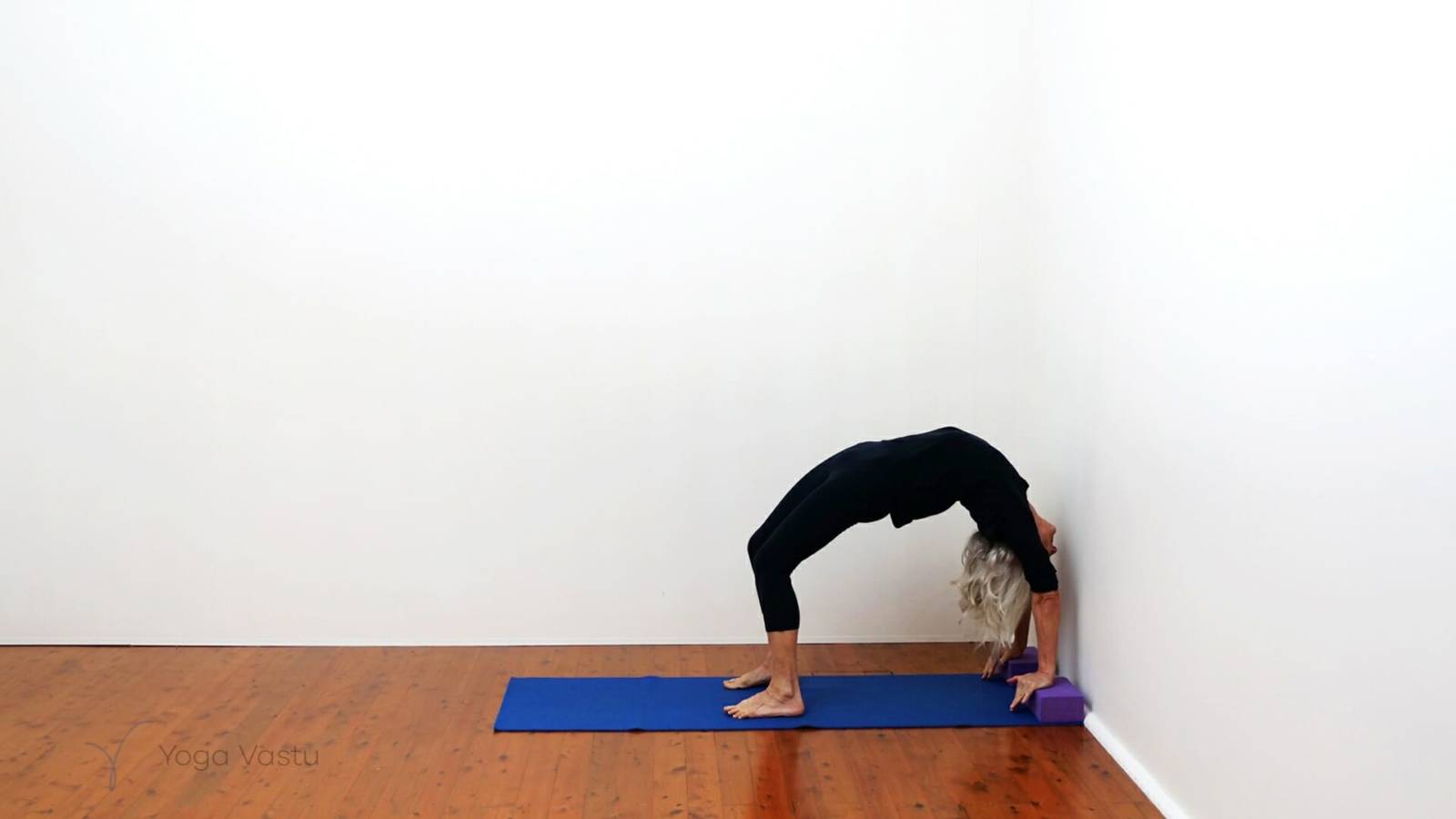Backbends help us to feel and to find the back of our bodies. The back is often an unknown area as it can’t be seen. And yet to create a more complete sense of ourselves, we use yoga to experience our whole body and to create a fuller awareness of how to be balanced.
This sequence uses the wall or floor as support where possible to help us hold focus. But with backbends, we also need to be mentally disciplined to keep searching for the sensations behind us. It comes with practice.
Start in Supta Virasana over a support to open the back of the chest and to open the front of the thighs in preparation for backbends. If unable to go all the way back, you can sit in Virasana and just lean back onto your forearms to where you can, using your arms as support.
Virasana forward and then press back into Adho Mukha Svanasana.
Stand in Tadasana with the feet apart and raise the arms up into Baddanguliyasana. Feel the palms going up as you observe the four corners of your feet on the floor.
Come down onto your mat and turn towards the wall. Place the hands on the floor against the wall, and then press back into Adho Mukha Svanasana (Dog Pose).
Prepare now for Full Arm Balance, either walking up the wall or up into the full pose. Feel the hands on the floor, and the heels against the wall for contact reference. Bring evenness between the two sides.
Sirsasana, preparation or full pose for a few minutes. Feel how we are building focus into the base, and into the back of the body, even in Sirsasana.
We now come into some backbends.
Start in Adho Mukha Svanasana and move forward into Urdhva Mukha Svanasana (Upward Facing Dog Pose). Repeat this transition twice. Notice the shift in body weight from the legs towards the arms, still keeping attention in the backs of the knees and thighs.
Salabhasana (Locust Pose) where we lift against gravity, strengthening the paraspinal muscles whilst keeping the spine long, legs active. Keep the knees straight.
Dhanurasana: bend the knees to 90 degrees and, first without holding the ankles, lift the thighs and chest off the floor. Feel how the buttocks need to engage to lift the legs up. Then hold the ankles, and lift the thighs off the floor and use the pull of the feet onto the arms to draw the chest up.
Take a few breaths in between, quieten the eyes, and feel how the back of the body starts to come alive.
Come up onto your knees for Ustrasana, placing the knees and lower pelvis against the wall for direction, to remind us to keep the hips forward and the backs of the knees open as we arch the trunk backwards.
Chatushpadasana – a similar action, but this time contained as you need to lift against gravity. The back muscles need to engage, the back ribs drawing up towards the chest.
Repeat Chatushpadasana, or now prepare for Urdhva Dhanurasana, the full pose, with hands onto blocks placed against the wall. Have them flat or on their sides, depending on how much support you need for the chest to lift up.
Build on the lift that is now coming in the pose, conscious of the hands on the blocks and feet placed evenly on the floor. Keep aware of your base, even as you lift up into a full back arch. Side hips up, back of the knees open.
To release the back, come up to Uttanasana and then step back into Adho Mukha Svanasana. You can repeat Adho Mukha Svanasana a few times.
Then lie back for Supta Padangusthasana 1 and 2. Place a block on either side of each hip and loop a belt around the heel of the upward leg. This helps to “ground” the legs, bringing them back into the pelvis and we can then release the back muscles by broadening them out to the side as you go to the second variation.
Then take a bolster or a few folded blankets and fold your support placing a small section up the wall. Lie back with the heels against the wall, and the back pelvis resting on the bolster, shoulders to the floor.
Slide back at the end and rest the crossed ankles onto the bolster and stay here in Savasana until the breath quietens and you come back to quietness in the face and eyes.
Illustrated sequence of video
Download and print the free illustrated sequence of this video.
Video stills from this sequence
